Located on the foothills of Alborz Mountain range at an altitude of 1278 meters, Qazvin is one of the most historical cities of Iran and once was the capital for part of the Safavid history. Sights of Qazvin has given this city the first rank in having historical buildings in the country; so in case you wish to see Qazvin’s all curiosities, you have to spend a few days here, and even one trip may not be enough. Qazvin was also a crossing point for traders and merchants due to the Silk Road. Qazvin is also home to many great Iranian Artists such as Mir Emad Qazvini (1554-1615) and in addition to all this, is also a city of delicious dishes and sweets.
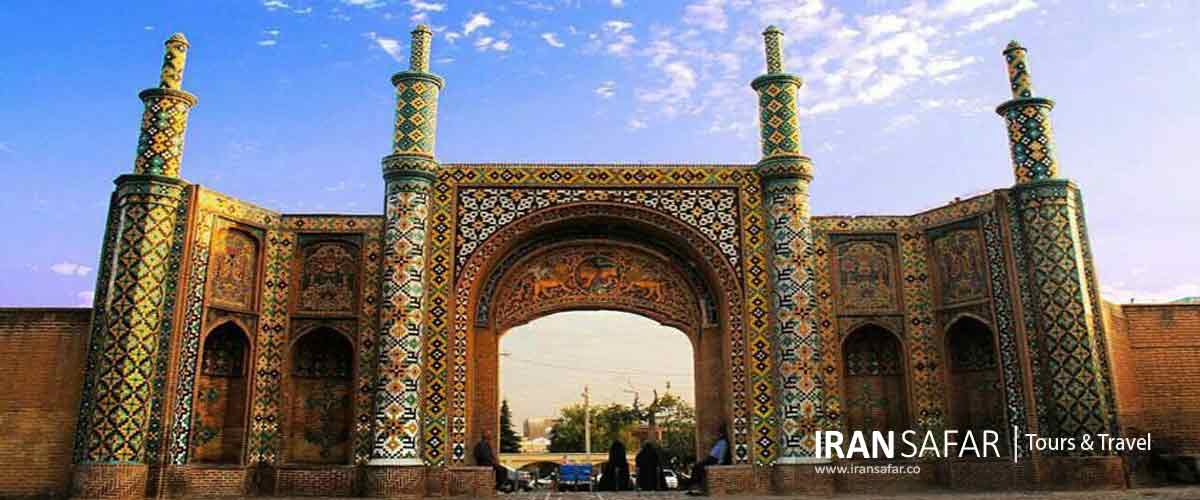 Darb-e kooshk, Qazvin, Iran
Darb-e kooshk, Qazvin, Iran
History of Qazvin
Qazvin city is believed to be founded in the Sasanian Empire era, by king Shapur II (r. 309 – 379 AD). Apparently, the king ordered the construction of a fortress in this area to prevent the invasion of Deilamites , and the foundation of the city was gradually laid according to this order. Some historians believe that the name Qazvin comes from the word Kashvin meaning border, and some orientalists also believe that the word Qazvin is derived from the name of a tribe called Caspians, a group living in the west of the Caspian Sea. Qazvin prospered under the Seljuk Empire , who erected many fine buildings in whole Iran. Much later during the second Safavid king, Tahmasb I (r. 1524–76), the capital of Iran was transferred to Qazvin from Tabriz (1548). The city was officially chosen as the center of the Iranian government for 51 years, so it has an important cultural and historical value in the history of Iran.
What is Qazvin famous for?
Qazvin is famed for Persian carpets, and fie art such as Miniature paintings and calligraphy as well as its grapes and the delicious sweets called Baklava. Although a considerable sprinkling of sights can be found in Qazvin, but for most Western travelers Qazvin is known as a launch point for excursions to the famous Castle of the Assassins in marvelous Alamut Valley. There are many “First Ever”s in Qazvin such as the first street in Iran called Sepah Street that was built for the first time in Qazvin. Because of its some of the most famous caravanseraies of Iran, one of the best bazaars in Iran, the old gates, the palaces and the museums, Qazvin is worth at least one full day visit.
30 August every year, the day that King Tahmasb Safavid transferred the Iranian capital to Qazvin, is announced as the national day of Qazvin. The language of the people of this city is Persian with Qazvini accent. But Tati, Gilaki and Azeri languages are also spoken in this city.
Also Read : Iran Ethnic Groups
What to see in Qazvin?
The sights of Qazvin include a wide range. In fact, there are several museums, several churches, several traditional markets (Bazaars) and a large number of monuments in this fascinating and spectacular city.
The city of Qazvin was chosen as the capital of Iran during the Safavid Empire rule and as the main center of government always enjoyed the special attention of the rulers. That’s why Qazvin has the first place in Iran in terms of the number of historical monuments and tourist attractions.
Highlights of Qazvin
Here we introduce some highlights of Qazvin:
1
Qazvin Chehel Sotoun Edifice
Chehel sotoun or Forty Columned Edifice is a Safavid palace located in old town of Qazvin. This square shaped mansion was built when Shah Tahmasb, the Safavid king, transferred the capital to Qazvin due to the treat of Ottoman Turks. The palace is constructed according to the design of a Turkish architect with a hall in the middle of a beautiful garden which has very attractive wooden windows.
as Qazvin is known as the capital of calligraphy of Iran, the palace which is dedicated to a treasure including various interesting historical and ancient objects was later turned to the calligraphy museum of the city after renovation.
The wall paintings of the first floor are indicating the miniatures of the Qazvin art school that has a global reputation in miniatures and paintings.
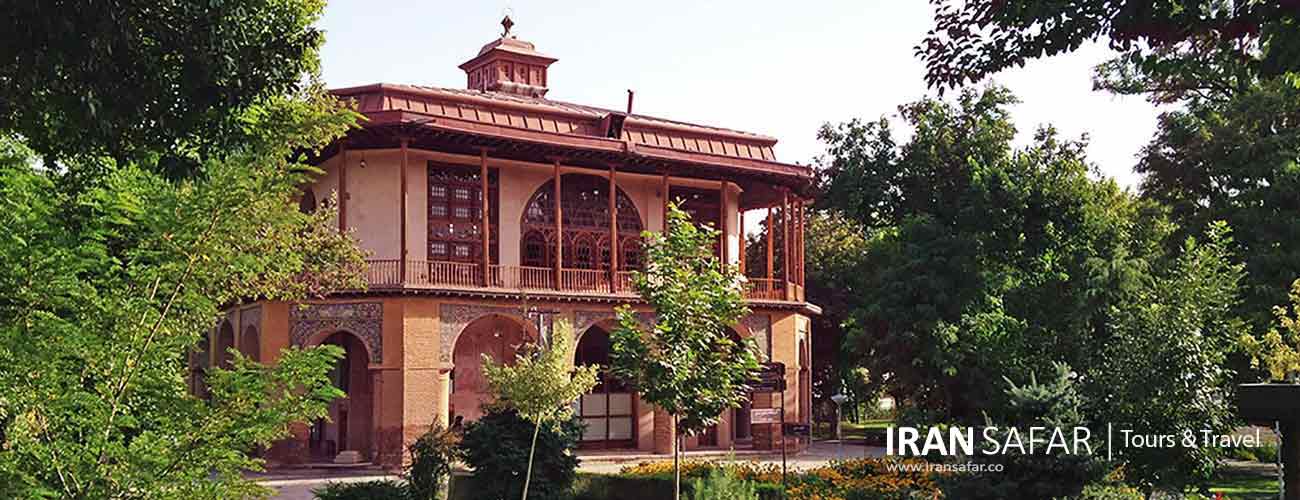
Chehel Sotoun Edifice, Qazvin, Iran
Also Read : Chehel Sotoon Palace of Isfahan
2
Jameh Mosque of Qazvin
Jame Mosque (Congregational Mosque) of Qazvin is one of the oldest mosques in Iran built originally during 9th century on the ruins of an ancient fire temple.
The double layered main dome of the mosque is built during Seljuk era, and was decorated by beautiful tile work during the late Safavid era when the mosque was expanded.
This old mosque has a Shabestan containing some precious examples of relief calligraphy from 11th century and a water reservoir, both now under the protection of Iran’s Cultural Heritage Organization.
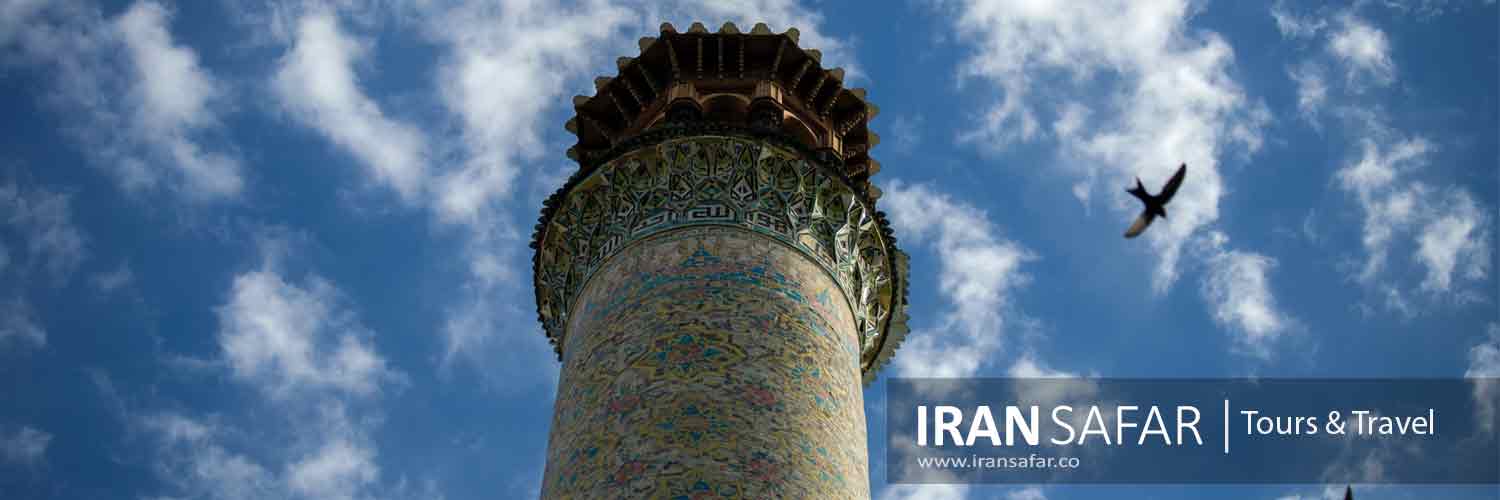 Friday Mosque of Qazvin, Qazvin, Iran
Friday Mosque of Qazvin, Qazvin, Iran
3
Shazdeh Hossein Shrine
The stunning building of Shazdeh Hussein is the mausoleum of one of the numerous sons of the eighth Shiite imam, Imam Reza, located in city center of Qazvin.
The shrine was first built in 1220s however during the reign of Safavid kings it received some restoration and became a magnificent architectural complex and .the actual mirror work inside the building was added to the building in 1840s.
A vast courtyard, flanked by the northern and southern gates, provides enough space to gaze at the edifice. Of all the entrances, the northern one is an imposing piece of work. Geometrical patterns, decorative tile-works, tall gates, and 6 mini-minarets have given the northern entrance a unique style.
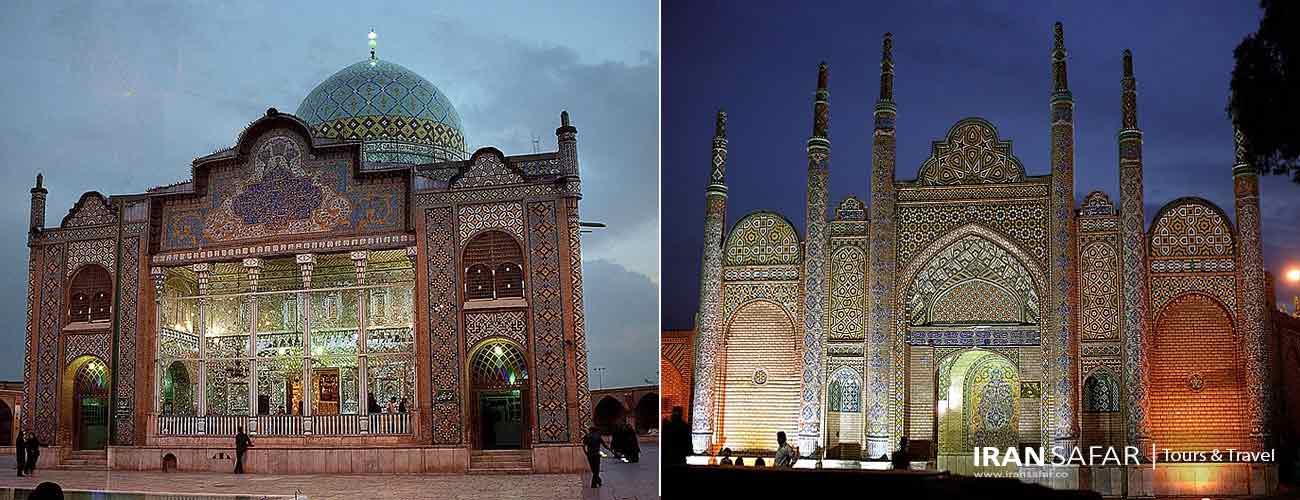 Shazdeh Hossein Shrine, Qazvin, Iran
Shazdeh Hossein Shrine, Qazvin, Iran
4
Alamut Castle
Alamut Castle is located in the northeast Qazvin province near Gazorkhan village at an altitude of 2163 m. The fort has only one entrance on its northern face with more than 400 stone steps. There is a gorge on the southern slope of the mountain that blocks any way of penetration. The castle is almost 120 meters long and between 10 to 35 meters wide.
While standing at the top of the fort, a distance of about 10 Km can be seen.
This fortress which is one of the famous castles of Iran , was used as the residence of Hassan Sabah, the leader of the Ismaiili sect (see – Religions in Iran)who was born in Qom in a Shiite family and spent some time studying in a theological madrasa in Neishabour, northeast Iran. Later He moved to Egypt where he continued studying for 3 more years after which he returned to Iran and settled in Alamut Where he began expanding his influence outwards to nearby towns and districts, using his agents to gain political favor and to intimidate the local populations. He Spent most of his days at Alamut producing religious works and developing doctrines for his order, the Assassins order.
Shortly after establishing their headquarters at Alamut Castle, the sect captured Lambsar Castle, to be the largest of the Isma’ili fortresses and confirming the Assassins’ power in northern Persia.
Hassan Sabah died of an illness after living in Alamut Castle with his family for 35 years. later, the Mongols burnt and destroyed his tomb and his fortress.
Read More : Alamut Castle
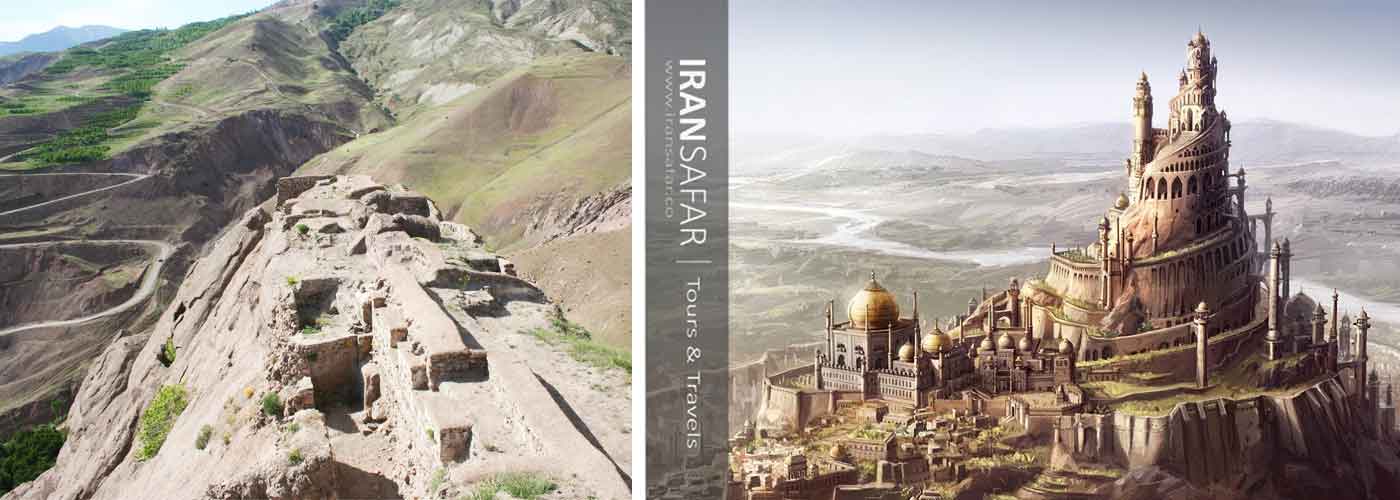 Left: Alamut Castle ruins, Alamut, Iran | Right: Imaginary picture of Alamut Castle
Left: Alamut Castle ruins, Alamut, Iran | Right: Imaginary picture of Alamut Castle
Ovan Lake
located in the historical region of Alamut, Ovan Lake is the largest and most beautiful lake in Qazvin province, 85 km north of Qazvin, between the four villages of Ovan, Verben, Zavardasht and Zarabad in Qazvin. This freshwater lake has an area of more than 70,000 m2 and its depth at the deepest point is about 6 m. Most of the lake’s water is supplied by springs in the lake bed and a small percentage by rainfall. In fact, the constant input has caused the water of Lake Ovan to be clear and transparent. Lake Ovan is home to a variety of spotted trout, carp and pikes, and in the fall is home to migratory birds such as swans, geese and ducks. Lake Ovan attracts many domestic and foreign tourists in the four seasons of the year with its mesmerizing landscape. The lake is a place for fishing and boating in summer and camping is allowed by the lake.
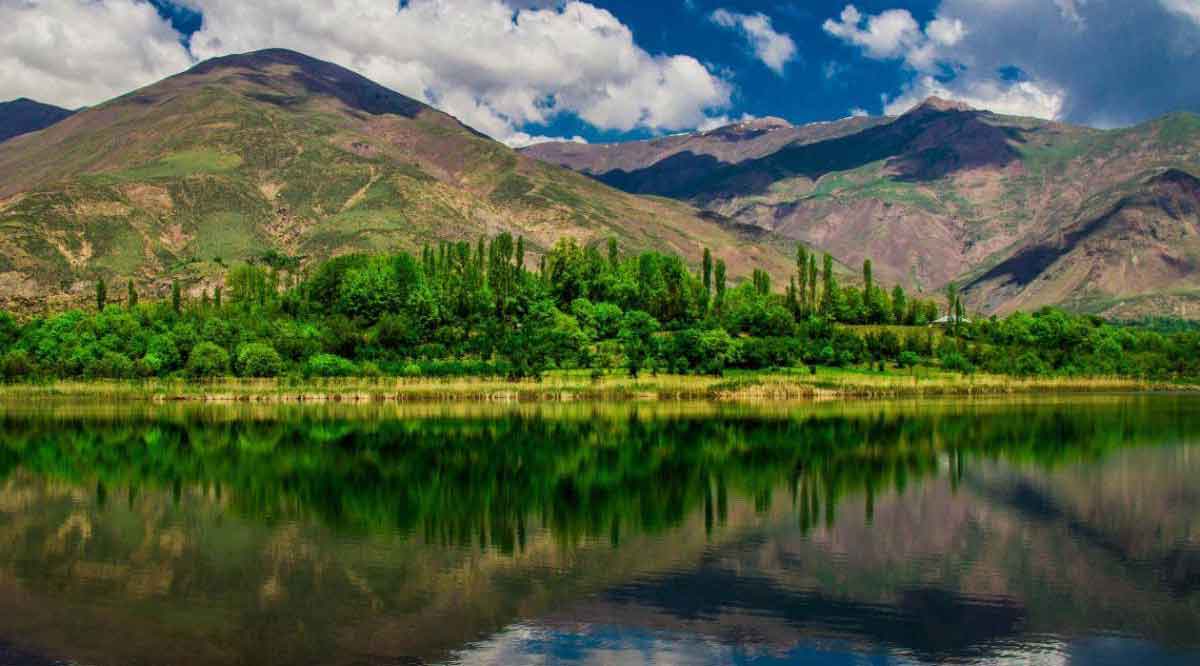
Also Read : Iran’s Natural Attractions
5
Qajar Bath
One of the spectacular attractions in the city of Qazvin, which is recommended to any first time visitor, is the Qajar bath. It is a beautiful small old Persian Hammam (Iranian Traditional Bath) located in a tiny alley at the heart of Qazvin. It is now converted into an anthropological museum. This historical attraction used as a museum today was built in 1647 by the order of the famous Safavid king Shah Abbas II.
The total area of Qajar bath is about 1045 m2 and consists of two separate parts for men and women and three main parts of Sarbineh (Cloak Room), Mian-dar and Garmabeh. The main door of the bathroom opens to the south and leads to the Sarbineh with a spiral staircase. The large Sarbineh of the bath, in the middle of which there is a beautiful pond (Howz), has six elevated platforms where customers once sat for rest before and after washing. There was another door to the bathroom from the west, which was probably for women.
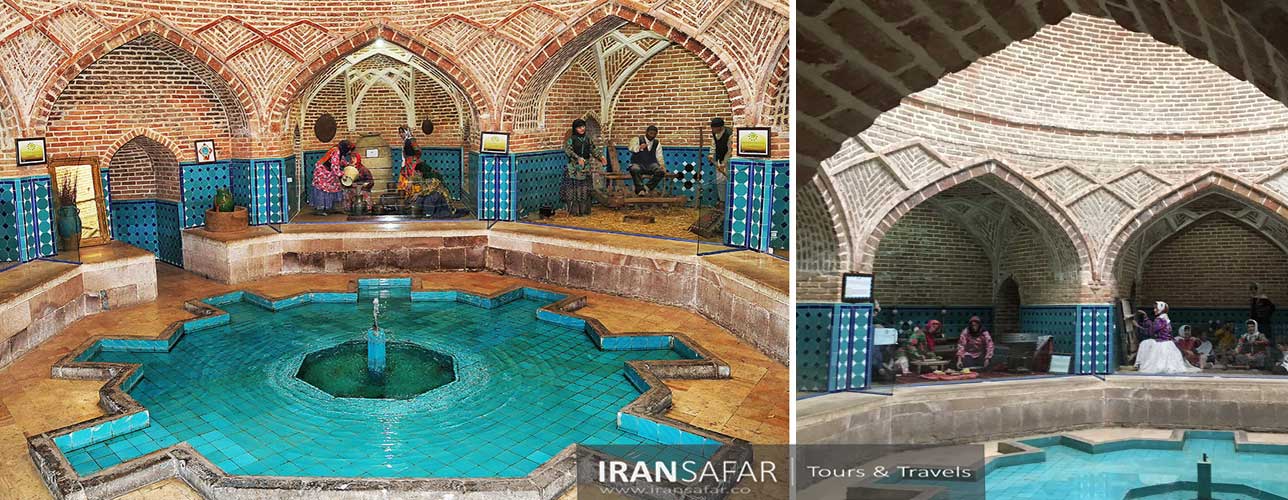 Qajar Bath, Qazvin, Iran
Qajar Bath, Qazvin, Iran
6
Cantur Church
After Nasser-e-Din Shah‘s (Qajar King r. 1848-1896) visit to France, road construction projects began between the cities to connect Tehran with Europe. The road Tehran – Qazvin was built by Saad al-Saltanah, Qazvin’s later governor, but the Anzali road construction was performed by a Russian company called “Insurance and Transport“. The company was handled by a man named “Anatoly Nekalayevich Bastelma“. During the construction project, Russian engineers built a small church in Qazvin, easily recognizable by its red brick structure and turquoise dome.
This church, locally known as the bell tower, has a cruciform design with a large dome in the center of the sanctuary and a smaller dome at the top of the east-facing altar. The entrance of the church is located on the western side and includes the entrance space with a pitched roof at the gate. After the entrance, there is anteroom above which a three-story bell tower is erected about eleven meters high with a small dome above it. The Russian crosses, which hang only on the two sides of the entrance walls, indicate the nationality of its creators.
The churchyard is relatively small and there are tombstones around it. One of the tombs marked with a black stone belongs to a Russian engineer named Nikolai Alexandrovich who died during the road construction. In addition to the tombstone, there is another stone in the church owned by a Russian pilot reportedly crashed around the city during World War I, and the body of the pilot was buried inside the church.
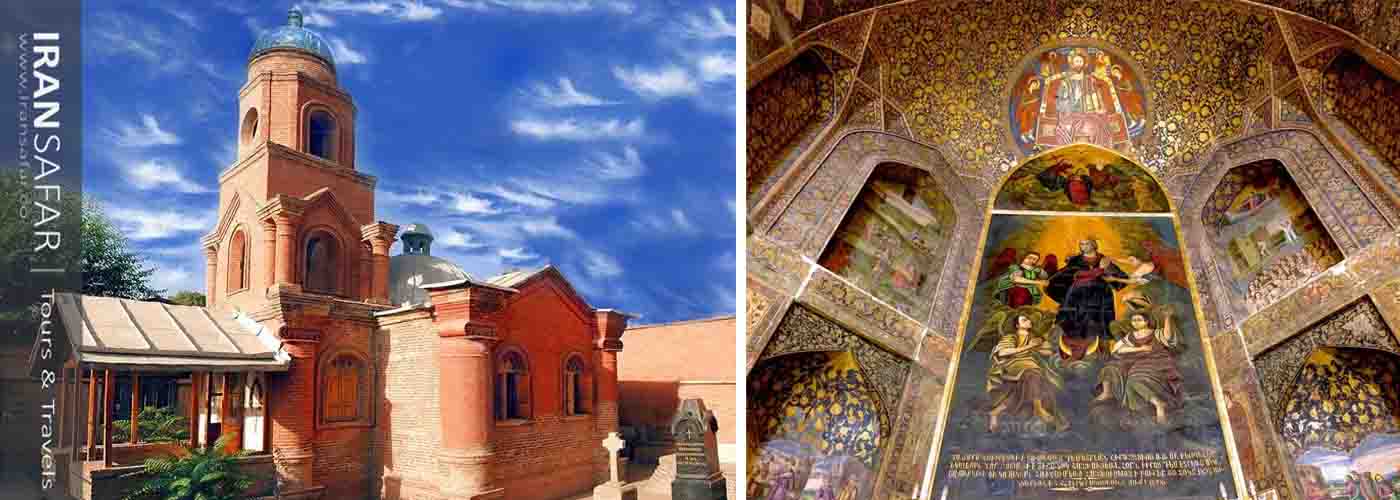 Left: Cantur Church, Qazvin, Iran | Right: Saint Mary Church, Tabriz, Iran
Left: Cantur Church, Qazvin, Iran | Right: Saint Mary Church, Tabriz, Iran
Also Read : 5 remarkable Churches in Iran
What to Eat in Qazvin?
Qazvin, the capital of the Safavid era, has a long history, a rich culture, special customs and of course pleasant dishes! Cuisine of Qazvin has made this city one of the most attractive provinces for food tourism in Iran. If you are into trying new and varied cuisines, a trip to this beautiful and historical region is a good option for you.
Qazvin’s famous dishes
Here is a list of Qazvin’s famous local foods :
Also Read : Persian Cuisine
Gheymeh Nesar
The most famous and popular dish of Qazvin is Gheymeh Nesar. Made of meat, rice, onions, saffron, pistachios and almonds, Gheimeh Nesar is one of the most popular foods for important ceremonies and celebrations in Qazvin. This dish is a festival of colors and a feast of tastes.The components of Gheimeh Nesar are prepared separately at the beginning. The rice is cooked, then gets mixed with meat, saffron, barberries, orange zest, along with chopped almonds and pistachios. It’s usually flavored with some special Persian spices like cinnamon, cardamom and a bit of cumin. It’s a special dish for parties and gatherings and you can also find and taste Gheymeh Nesar in Qazvin’s local restaurants. This very popular dish is usually served with vegetables.
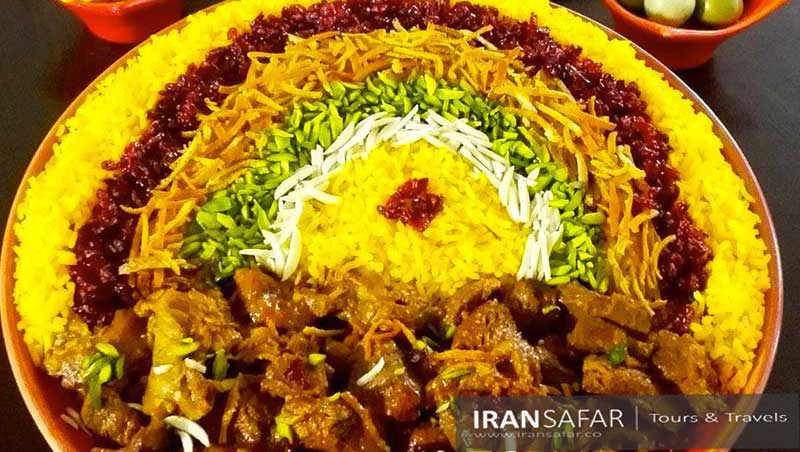
Haleem
Some may know Qazvin for its baklava and Gheymeh Nesar, but those who have tasted the mild taste of Haleem can never forget this memorable taste. This meat-full thick porridge is so popular that you would see long queues of people waiting in front of Haleem shops specially in Ramadan. Qazvin Halim is made from wheat, barley, flour, meat and oil and has a slightly salty taste because most people in Qazvin eat Haleem with salt.
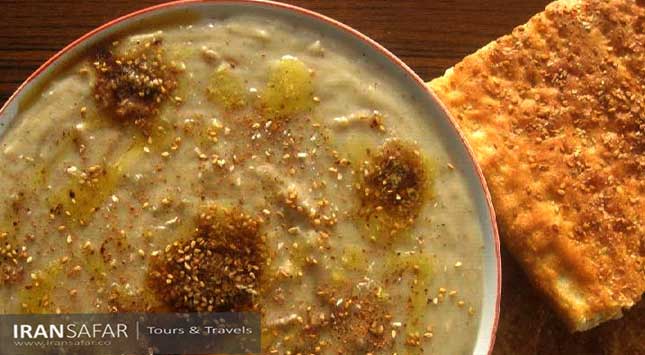
How to cook Haleem?
The term Haleem or Halim comes from the Arabic language meaning shredded meat. Haleem is a very popular dish in the Middle East, Central Asia, and in the Indian subcontinent. There are many varieties of Haleem based on different regional recipes .Iranian Haleem is different from the ones served in Arab countries. A traditional haleem is made with soaking wheat, barley, shredded meat (beef, lamb, chicken or turkey) gram lentil overnight and spices.
- These ingredients are cooked together for several hours, which results in a thick porridge-like paste.
- Meat is cooked separately until the meat becomes soft to get easily shredded.
- The cooked wheat, barley and lentils are then mixed with the meat (Beef or Mutton or Chicken) and blended with a heavy hand mixer to obtain a paste-like consistency.
- The cooking procedure takes about 5-6 hours to complete.
- In the end the cooked haleem is seasoned with ceanemon and served with salt or sugar; However, haleem preparation varies in different regions

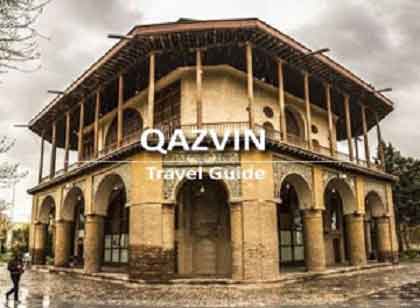


Comment (0)